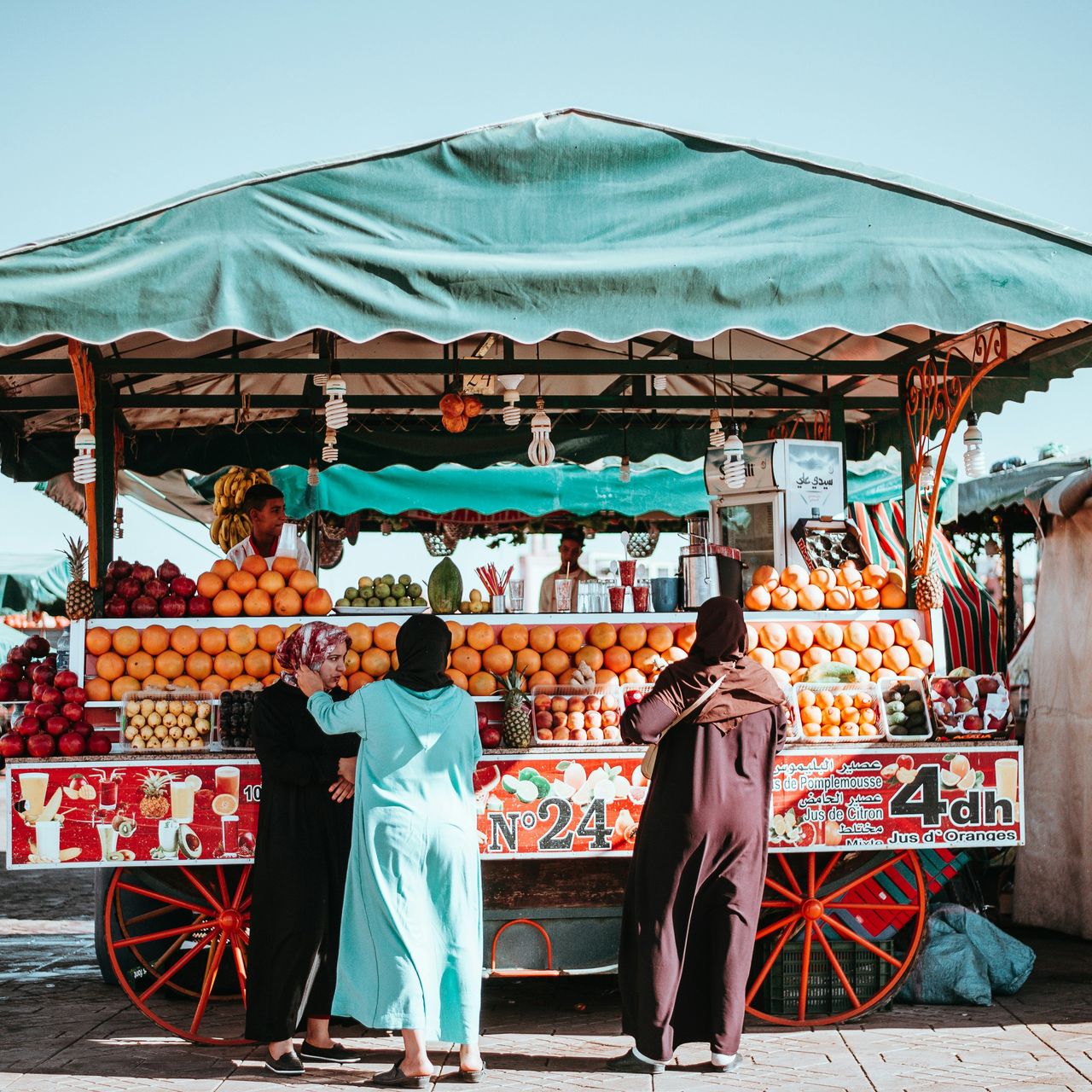A role of justice
Established in 1071 by the Almoravids, right next to their palace of which only ruins remain today at the base of the Koutoubia, the square originally known as Rahba El Ksar, the Palace Square, served as a place of justice until the end of the 14th century. It was also used by the Palace for military parades and demonstrations.

The square of the deceased or the demolished mosque
Over the centuries, the square embraced its role as a cultural and commercial hub. It has long been a cosmopolitan place where traders from afar gathered to exchange goods. In the 17th century, the Jemaa el Hna, the mosque of tranquility, was intended to be built on the square, but instead, the city faced a plague that decimated a large part of its population over nine years, including Sultan Ahmed Al Mansour. The square was then named Jemaa el Fna, meaning the demolished mosque or the square of the deceased.

A venue for performances and trade
In the early 18th century, while still a favored spot for traders and merchants, the square also became a venue for performances. Storytellers, singers, and dancers convened here, attracting an ever-growing audience. Over years and centuries, the square took on its present appearance. Cafés, hotels, and shops gradually popped up around it. In 1921, just after the post office and Bank of Morocco buildings were constructed, a royal decree prohibited any construction that would threaten the identity of Jemaa el Fna, namely, the live performances constantly taking place there.

Listed as world heritage
In 1985, the medina of Marrakech was listed as a World Heritage Site by UNESCO. In 2001, Jemaa el Fna was proclaimed a Masterpiece of the Oral and Intangible Heritage of Humanity. Its activities, stemming from ancient tradition, are considered intrinsically linked to the city and its identity. Through its efforts, UNESCO aims to preserve these living traditional practices and protect them against the standardization of culture and mass tourism. It's a daily struggle against increasing modernization and ever-growing tourism. And even though some miss the old charm of the dirt floor, Jemaa el Fna remains the symbol of Marrakech, embodying its cosmopolitan, unifying, and vibrant spirit. Let's hope it lasts...

